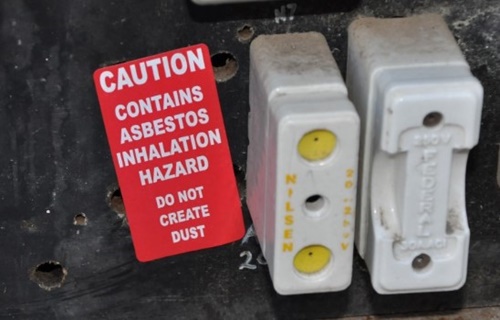Asbestos in Electrical Switchboards and Meters

In homes or offices built before 1980, there's a high probability that electrical meter boards contain asbestos. The 90s brought a surge in electricity being installed in every building, and manufacturers were looking for cheap and abundant materials to facilitate safe electrical product processing.
Asbestos has already been on the market, and construction material manufacturers have made good use of the mineral's versatility and accessible price range. It was only a matter of adapting the fibrous material to the needs of isolating electrical components, and another market opened to using it.
In the early stages of commercial electricity, many components of electrical panels incorporated asbestos for fireproofing since the toxic mineral has long been known to have a high resistance to electrical currents.
Although utilized to protect homes and commercial buildings, asbestos is detrimental to the health of those who come in direct contact with its fibers over an extended period. If inhaled or swallowed, the microscopic asbestos particles may cause asbestos-related diseases, which produce symptoms only after decades from exposure, making their diagnosis and treatment difficult.
It is why owners of old houses should consider a professional approach when doing electrical work because if boards are drilled without proper precautions, it may leave behind asbestos dust floating in the air that could be easily inhaled. When it comes to old buildings, electricians should be especially cautious as most of the wire work has been done with asbestos-containing materials like:
- electrical shielding
- cable wraps
- wire insulation
- circuit breakers
- ebonized panels
- switchboards
- flash guard paper
- spackle
The older the switchboard or its surroundings, the more chance that it contains asbestos. Most switchboards installed before the '90s most likely incorporate asbestos. Generally, asbestos-containing materials were used as electrical insulators on meter boards and panels. Timber meter boxes installed before the 90s may be lined with asbestos-cement sheeting. Thus, asbestos debris and dust could be present in the cabinets. Materials mixed with asbestos were also the bases to:
- busbars
- spark arresters
- flash guards
Old electrical switchboard and meter panels were made from asbestos-containing resin or coal tar pitch composite. Drilling or sawing can reveal whitish asbestos fibers protruding from these materials.
Electrical insulation made with asbestos is an overly common occurrence in older homes. So much so that several studies tried pinpointing electricians' exposure level on the job; they are more in danger of developing asbestos-related diseases than other people on typical jobs. But construction workers and DIY enthusiasts also face asbestos exposure while doing electrical work in older buildings.
Make Steps to Avoid Asbestos Exposure
Planning upgrades to your old electrical system is safe if the products are in good condition and don't show signs of wear and tear. However, when they deteriorate, they can cause the release of asbestos fibers into your home environment and put the family at risk of asbestos exposure.
It's impossible to tell if something has asbestos just by looking at it. The best is to get materials tested or assume they contain asbestos and take suitable precautions. If you suspect your electrical system is embedded with asbestos and is eroded, you should have a professional assess the situation since they have the necessary equipment and knowledge to handle hazardous substances. If you decide to do it yourself, you should take all the required precautions in advance to minimize any exposure:
- search information about asbestos uses, legislation, and health risks
- locate possible contaminated areas in your home before remodeling
- buy proper safety equipment listed by the OSHA
- seal the work area and be careful not to spread the toxic fibers in your house
